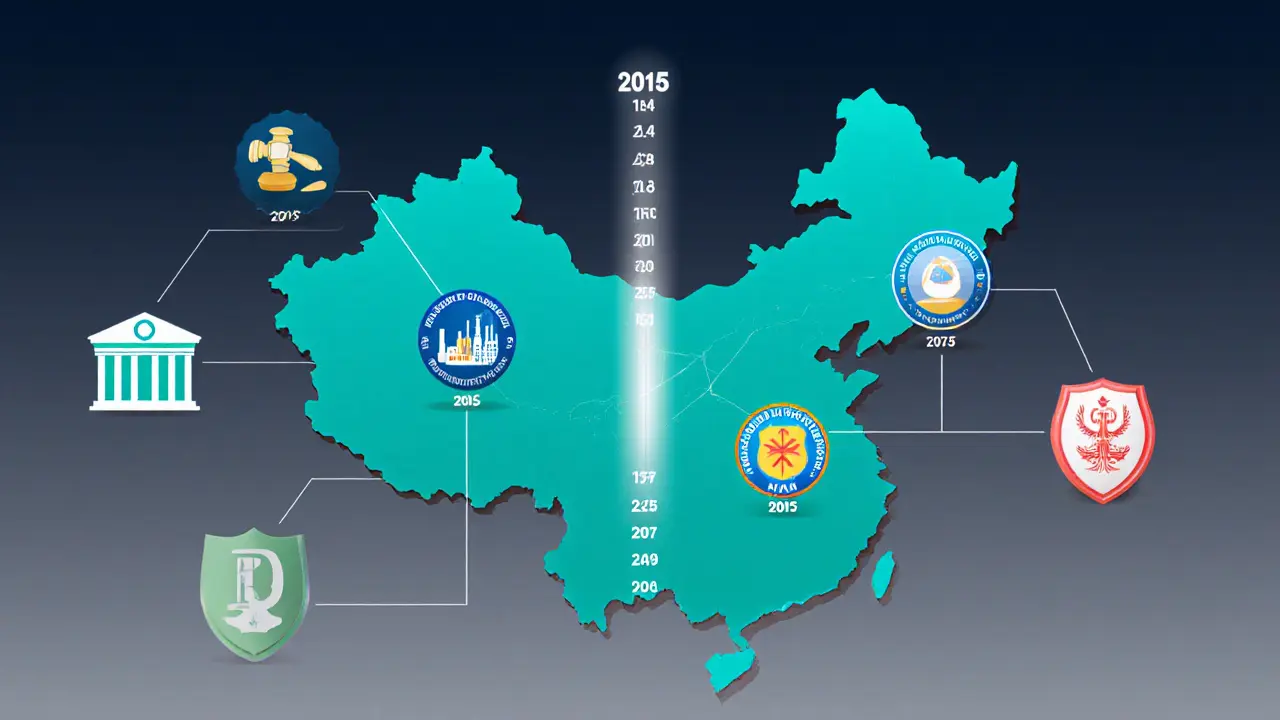China mining ban 2025 – What it means for crypto
When talking about China mining ban 2025, the projected prohibition on Bitcoin and other cryptocurrency mining inside China for the year 2025. Also known as Chinese mining crackdown 2025, it signals a major shift in where and how hash power will be sourced worldwide.
China mining ban 2025 isn’t just a headline; it directly triggers changes in crypto regulation, the set of laws and guidelines that govern digital asset activities across borders. In practice, regulators in the U.S., EU and Asia tighten licensing rules to curb illicit mining revenue. The ban forces miners to register as money‑service businesses or obtain specific exchange permits, echoing the steps outlined in recent US MSB and BitLicense guides.
The ban also reshapes mining difficulty, the algorithmic measure that adjusts how hard it is to solve a block. As Chinese hash farms shut down, the global hash rate drops, prompting the network to lower difficulty temporarily. That dip can create short‑term price volatility, an angle highlighted in our "How to Calculate Mining Difficulty" article.
At the exchange front, crypto exchanges, platforms that let users trade, deposit or withdraw digital assets feel the ripple. Some platforms previously reliant on Chinese liquidity face order‑book gaps, while others adapt by onboarding new miners from North America or the Middle East. The shift mirrors the trends we saw in the 2025 exchange CEO review and the Iran bans overview.
Governments are countering the disruption with regulatory sandbox, controlled environments where innovators can test blockchain projects under relaxed rules. Sandbox programs in the EU, Singapore and even emerging African markets provide a safety net for startups displaced by the Chinese crackdown. Our sandbox guide shows how to apply, graduate, and leverage these frameworks to keep projects alive.
Putting it together, the ban influences three core triples: (1) China mining ban 2025 influences mining difficulty, (2) crypto regulation requires licensing for displaced miners, and (3) regulatory sandbox supports new exchange models. For traders, the immediate takeaway is to watch hash‑rate dashboards, verify exchange liquidity sources, and consider jurisdictions with clear licensing paths. For developers, the sandbox route offers a low‑risk launchpad while you re‑engineer infrastructure away from China.
Below you’ll find a curated collection of articles that break down each of these angles—licensing checklists, token deep‑dives, exchange reviews, and sandbox how‑tos—so you can act on the China mining ban 2025 with confidence.

China’s Crypto Mining Ban: Laws, Restrictions & Impact
Apr 24, 2025, Posted by Ronan Caverly
An up‑to‑date look at China's crypto mining ban, covering legal status, enforcement agencies, reasons behind the crackdown, and its global impact.
MORESEARCH HERE
Categories
TAGS
- decentralized exchange
- crypto exchange review
- cryptocurrency
- crypto coin
- CoinMarketCap airdrop
- smart contracts
- tokenomics
- cryptocurrency exchange safety
- crypto exchange
- cryptocurrency airdrop
- crypto airdrop
- cryptocurrency exchange
- crypto airdrop guide
- blockchain token distribution
- DeFi
- crypto exchange scam
- crypto airdrop 2025
- Ethereum
- cross-chain interoperability
- ERC-20
